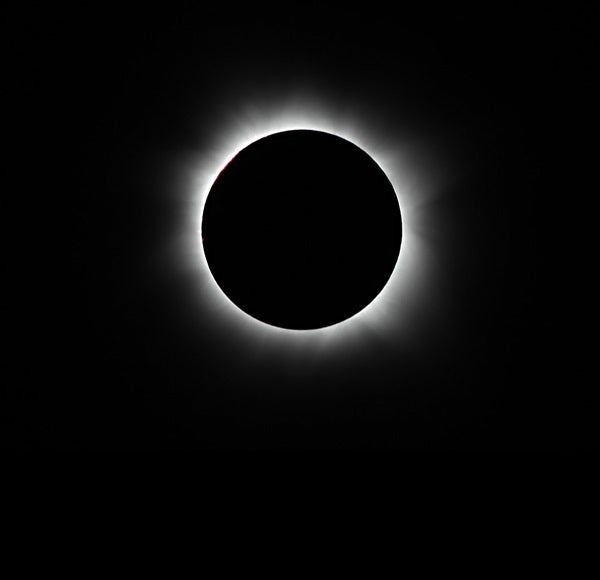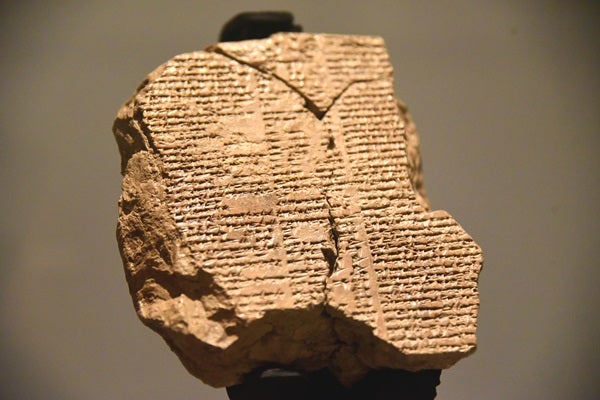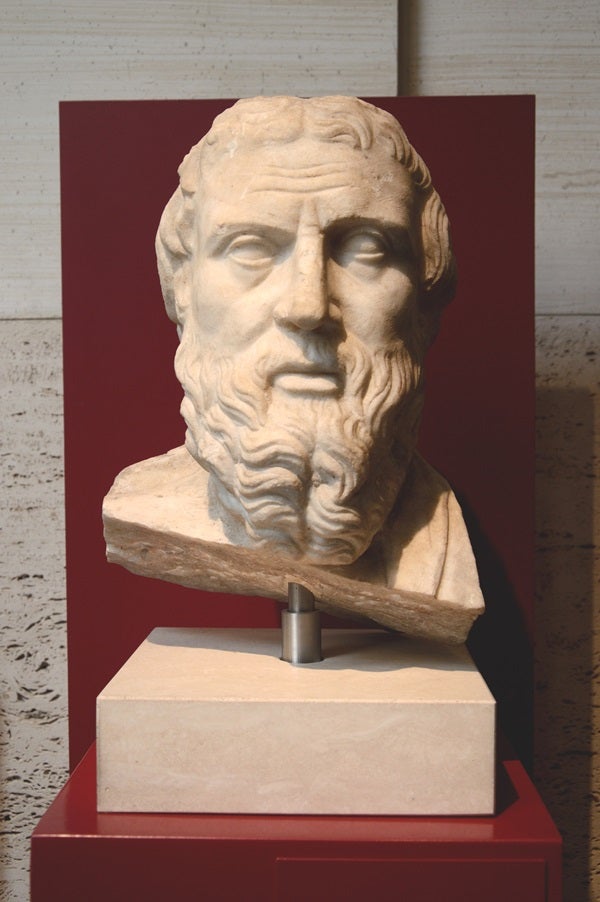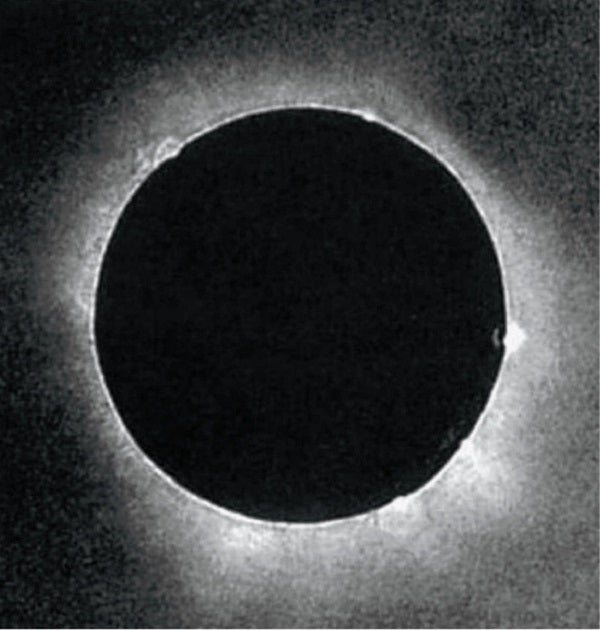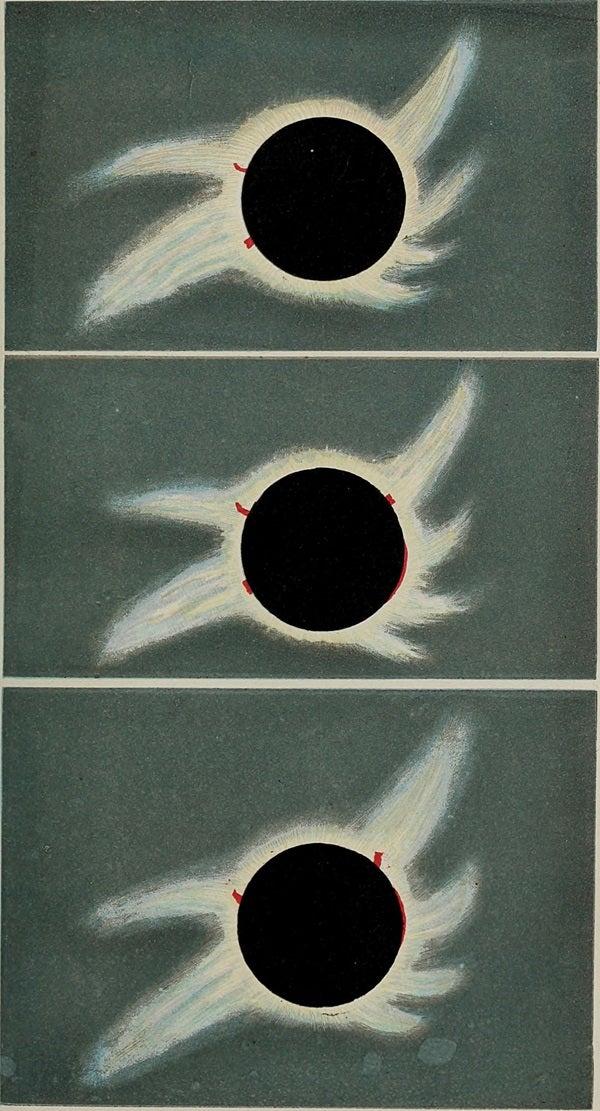In nature, no event is as dramatic and awe-inspiring as a total solar eclipse. For most of human history these events were mysterious, terrifying, and unpredictable. Some went unrecorded, while others rank as historic.
So what makes a total solar eclipse historic? It may be the way it affected large numbers of people, or how it led to a scientific discovery, or, perhaps, the way such an event impacted the life of just one individual.
Historians have records of eclipses from all over the world. One such place, the ancient city of Nineveh, stood on the east bank of the Tigris River in what is now northern Iraq. Rediscovered in the early 19th century, Nineveh, which now lies in ruins, was the greatest source of cuneiform tablets in the ancient Middle East. These tablets, covered in wedge-shaped characters, describe property listings, names of kings, the Epic of Gilgamesh, and accounts of eclipses. Astronomers have joined forces with archaeologists to use the information contained in thousands of hard-baked clay tablets to help pinpoint historic events.
The Chinese also kept detailed records of solar and lunar eclipses. One such document tells the stories of court astrologers Xi (or Hi) and He (or Ho), who lost their heads for not predicting a solar eclipse in 2100 B.C.
Herodotus was a fifth-century B.C. Greek historian who, among other accomplishments, visited all Seven Wonders of the World. He also collected stories everywhere he traveled. One such story recounted how a total solar eclipse stopped a war and brought about a marriage.
About a century before Herodotus lived, the Lydians and the Medes were fighting a border war for more than five years. On May 28, 585 B.C., the two nations battled near the Halys River, in what is now central Turkey. The day was hot and clear. As the battle raged, the sky began to darken. Soon, the sound of clashing solders slowed and then stopped. Everyone looked skyward to see the Sun blotted from the sky.
Herodotus tells us this was interpreted as an omen to end the war. To seal the alliance between these two groups, Aryenes, daughter of the king of Lydia, was married to the son of the king of the Medes. Herodotus also relates that the Greek philosopher Thales of Miletus had predicted this very eclipse. If he did, the news apparently never reached these two warring armies.
Beantown darkens
Calculating an eclipse was once a fool’s errand, but as time went on, astronomers were able to predict when the Sun and Moon would be in just the right place. By the 19th century, eclipse predictions were commonplace. In 1806, what became known as Tecumseh’s Eclipse swept toward the city of Boston. The 4-minute, 50-second totality had been predicted well in advance.
In May of that year, Bostonian Andrew Newell had published a pamphlet titled “Darkness at Noon,” describing the anticipated June 16 eclipse. As talk of the eclipse spread, 16-year-old William Cranch Bond, an apprentice clockmaker to his father, found a rooftop perch that gave him a panoramic view of both the harbor and the town. Experiencing this eclipse changed Bond forever. He became an amateur astronomer and went on to become the first director of Harvard College Observatory. He went on to profoundly affect the direction of American astronomy — thanks to this eclipse.
The Sun was first photographed in 1845 by Hippolyte Fizeau and Léon Foucault. It was the total eclipse of July 28, 1851, however, that gave us the first useful photograph of the Sun’s outer atmosphere.
The path of totality cut across northern Europe, and the Royal Prussian Observatory in Königsberg lay in the zone of darkness. Waiting at the observatory’s telescope was a local photographer named Johann Berkowski with his daguerreotype camera equipment. Berkowski faced a common problem among early photographers: contrast. Contrasting between areas of light and dark in eclipse photos was a difficult undertaking in early photography.
Rather than film or glass, a daguerreotype is a silver-plated sheet of copper that has been exposed to fumes of mercury. The plates require long exposures to record images. Berkowski managed to capture the corona in just 84 seconds, marking a monumental first in our studies of the Sun.
Finding Fingerprints
In 1868, a truly enlightening discovery occurred during a total solar eclipse observed by French astronomer Jules Janssen. A few years earlier in Germany, Gustav Kirchhoff and Robert Bunsen had been studying the spectra of various elements heated to incandescence. Their work in identifying the chemical “fingerprints” of elements held promise for astronomers observing distant objects outside of any laboratory. Janssen, who became one of many researchers experimenting with spectroscopy, was working at an observatory in Guntur, India, on August 18, 1868, when a total eclipse gave him the chance to use a spectroscope to observe the Sun’s chromosphere. A bright yellow line initially identified as sodium instead became the first recorded discovery of the element helium, a noble gas then unknown on Earth.
Eistein’s proof
One of the most important eclipses in history happened in 1919. This particular eclipse cut a path across South America and the Atlantic Ocean, and landed on the west coast of Africa. Waiting on the island of Principe, in the Gulf of Guinea off the west coast of Africa, was a team of astronomers armed with telescopes and cameras and led by English physicist Sir Arthur Eddington.
Amid World War I, Albert Einstein published his groundbreaking paper on general relativity. When the theory was presented in 1915, the press claimed that only three people in the world could understand this new and seemingly outlandish idea. “Only three” may have been an exaggeration, but Eddington immediately realized the theory’s importance.
One prediction made by the theory of general relativity was the bending of light in a strong gravitational field, called gravitational lensing. In 1917, the astronomer royal of England, Sir Frank Watson, realized that a total solar eclipse would set up the perfect experiment to test relativity. The upcoming eclipse of May 29, 1919, was the best candidate — if only the war would end in time.
Luckily, the war ended in November 1918. During totality of the eclipse, the Sun would be in the constellation Taurus, near the stars of the famous Hyades cluster. So in February 1919, Eddington took photographs of the Hyades and made exact measurements of each star’s position. And in May, Eddington camped on Principe.
The day was clear. During the eclipse, astronomers worked frantically to photograph the stars nearest to the Sun. With his valuable exposures in hand, Eddington sailed home to England and measured the star images on the glass plates. Precise measurements of these stars, especially Kappa (κ) Tauri, showed a defiant deflection from its true position, proving one component of relativity — gravitational lensing — to be true. Overnight, Einstein became a world celebrity, and relativity became a fact of life in the 20th century.

